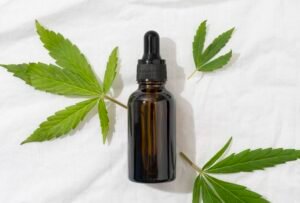Marijuana, once shrouded in controversy, has become increasingly accessible and popular. But what exactly are its effects on dedicated athletes? In this article, we delve into the current insights regarding the impact of marijuana on athletic performance.
As marijuana legalization spreads across various parts of the United States, researchers are tirelessly working to debunk misconceptions about this plant. Simultaneously, the societal stigma surrounding marijuana is gradually fading. Athletes and fitness enthusiasts, who celebrate its potential wellness benefits, are challenging the age-old stereotype of cannabis users being lethargic and unfit.
However, the question remains: Is marijuana a miracle substance that can enhance athletic performance, or do its negative consequences outweigh the advantages?
Also Read: CBD for Multiple Sclerosis
Benefit 1: Alleviating Inflammation
Reducing muscle and joint inflammation stands as one of the most promising areas of cannabis research. Numerous studies have highlighted the impact of marijuana on athletic performance, particularly the anti-inflammatory properties of CBD, the nonpsychoactive component of marijuana. Researchers are even exploring its potential in treating autoimmune conditions such as Crohn’s disease, lupus, and psoriasis.
Adam Brous, a certified yoga instructor and the founder of Ganja Guru Yoga in Denver, CO, incorporates marijuana into his practice and recommends it to clients dealing with pain and inflammation. According to Brous, many athletes find relief from muscle and connective tissue pain, as well as improved athletic performance due to faster recovery from previous injuries or surgeries.
For athletes who seek the benefits of CBD’s anti-inflammatory properties without experiencing its psychoactive effects, Brous suggests using topical products. He emphasizes that topicals and tinctures offer highly concentrated doses for targeted recovery.
Jamie Feaster, a former Division I college pole vaulter and current vice president of marketing at the marijuana delivery startup Eaze, turned to CBD to address the inflammation caused by an Achilles tendon rupture. He acknowledges that the impact of marijuana on athletic performance has been instrumental in his recovery, citing its effectiveness in reducing inflammation and aiding the healing process.
Also Read: Cannabis and Weight
Benefit 2: Pain Relief
In addition to its well-documented anti-inflammatory properties, cannabis has emerged as a promising avenue for alleviating pain, marking a domain of research with a multitude of positive outcomes. The exploration into the Impact of marijuana on athletic performance has unveiled its potential to provide relief from a spectrum of pain, spanning chronic pain to acute muscle spasms, thereby presenting a potential substitute for conventional, addictive opioids. This burgeoning field has found support from professionals such as Zach Scioli, a San Francisco-based trainer at DIAKADI Fitness, who ardently advocates for marijuana therapies in facilitating muscle recovery and addressing pain resulting from injuries. Scioli’s stance is rooted in personal experience, having opted for CBD oil and high-grade THC extracts over potent prescription painkillers after enduring a slipped disc in his lower back. This choice not only contributed to significant improvements in his pain management but also underscored the broader implications for overall well-being.
Furthermore, Christopher Louie, the founder of the Colorado-based cannabis startup Made in Xiaolin, has a compelling narrative attributing marijuana to saving his life after a gunshot wound in 2003. In a departure from the initially prescribed opioids, cannabis became a pivotal element in enhancing his quality of life. These anecdotes and experiences underscore the transformative potential of marijuana in the realm of pain management and recovery, prompting a closer examination of the nuanced Impact of marijuana on athletic performance.
Benefit 3: Managing Muscle Spasms
The Impact of marijuana on athletic performance extends beyond its well-documented medical applications for conditions such as multiple sclerosis and Parkinson’s disease. Athletes grappling with muscle spasms may find potential relief in cannabis, thanks to its anti-inflammatory properties. Erich Anderer, M.D., the chief of neurosurgery at NYU Langone Hospital – Brooklyn, sheds light on preliminary rodent studies indicating potential advantages in muscle recovery and the alleviation of muscle spasms attributed to cannabis’s anti-inflammatory attributes. Nevertheless, the current body of human research in this domain is still limited, underscoring the need for comprehensive investigations to substantiate the potential benefits of marijuana in optimizing athletic performance, especially in individuals without underlying disorders. As the scientific community delves deeper into this realm, a more nuanced understanding of the Impact of marijuana on athletic performance is likely to emerge, guiding athletes and medical professionals in navigating its potential integration into sports medicine.
Benefit 4: Enhancing Sleep
The multifaceted impact of marijuana extends beyond its influence on sleep. Delving into the intricacies, the relationship between marijuana and sleep involves THC inducing sleep, a valuable attribute for individuals contending with sleep apnea or those desiring to mitigate dreams, particularly individuals grappling with PTSD. Conversely, CBD plays a role in addressing REM sleep disorder and combating daytime fatigue, contributing to the intricate web of marijuana’s effects on sleep. This nuanced interplay is particularly noteworthy in the realm of athletic performance, where sufficient and restorative sleep is paramount for overall fitness.
Also Read: Hemp Seeds
Prominent figures in the athletic community, such as Scioli, advocate for the use of CBD among their clients to enhance sleep quality by mitigating stress levels. However, it’s imperative to acknowledge that marijuana’s impact on sleep comes with its nuances and complexities. Certain studies posit that THC usage may lead to morning grogginess and impaired memory, highlighting the importance of discernment in its application. Notably, a balanced approach is emerging, with a combination of 5mg CBD and 5mg THC showing promise in fostering improved cognitive performance following a night’s sleep. In this intricate tapestry of effects, the overarching theme of the impact of marijuana on athletic performance becomes evident, emphasizing the necessity for a comprehensive understanding of its varied consequences on sleep and cognitive function.
Benefit 5: Enhancing Mental Clarity
Contrary to common misconceptions, the Impact of Marijuana on Athletic Performance may not necessarily impair cognitive function; it could even enhance it. Research has shown that regular, low doses of THC restored cognitive function in elderly mice. Many fitness experts report that marijuana’s impact on athletic performance helps them achieve a heightened mental state during workouts.
The Impact of Marijuana on Athletic Performance can enhance mental focus and reduce anxiety, aiding athletes in achieving a meditative ‘flow state’ that is essential for athletic success.
Risk 1: Lung Damage
The Impact of marijuana on athletic performance can be significant, particularly concerning lung health. The act of smoking marijuana has the potential to adversely affect athletic capabilities due to its known association with structural lung damage. While the evidence linking marijuana use to cancer is not as robust as it is for cigarettes, there exists a recognized risk.
For athletes who prioritize overall fitness, maintaining healthy lungs is crucial. Caution should be exercised when contemplating any form of smoking, given its potential negative impact. Additionally, the lack of regulation in marijuana production introduces another layer of concern, as it may result in airborne contaminants and exposure to hazardous substances. Consideration of these factors becomes essential in understanding the comprehensive Impact of marijuana on athletic performance.
Also Read: Best Rolling Papers for Joints
Risk 2: Impaired Motor Skills
Considerable attention has been given to the Impact of marijuana on athletic performance, recognizing its potential to impede motor skills, especially when athletes opt for high-THC strains. Athletes should be mindful that the use of marijuana can compromise decision-making and coordination, presenting challenges in activities like driving or weightlifting.
It is noteworthy that, while marijuana might contribute to the restoration of cognitive function in older users, its impact on the developing adolescent brain is concerning. The substance can adversely affect neurocognitive performance and brain structure, emphasizing the importance of understanding the Impact of marijuana on athletic performance in individuals of different age groups.
Risk 3: Increased Risk of Depression
Extended marijuana use carries the risk of increased likelihood of depression. The potential for psychiatric disorders, including anxiety, depression, and schizophrenia, is higher among heavy, long-term cannabis users, which can ultimately impact athletic performance.
Depression can have adverse effects on fitness, including decreased motivation and various physical side effects. Elevated cortisol levels due to stress and depression can lead to weight gain, a weakened immune system, blood sugar fluctuations, and gastrointestinal problems, all of which can further contribute to the overall negative impact of marijuana on athletic performance. Understanding the impact of marijuana on athletic performance involves recognizing its potential role in exacerbating mental health conditions like depression, thereby affecting an athlete’s physical and mental well-being.
Also Read: Marijuana Amotivational Syndrome
Risk 4: Increased Risk of Heart Attack
Marijuana consumption has been linked to an elevated risk of heart attack within an hour of use. When combined with the potential triggers for heart attacks, such as strenuous exercise, engaging in physical activities while under the influence of cannabis can pose serious risks.
Individuals with a history of heart problems should consult a physician before embarking on a fitness regimen that involves marijuana, and for some, avoiding cannabis altogether may be the safest course of action.
In conclusion, while marijuana offers potential benefits for athletes, including pain relief, reduced inflammation, improved sleep, and enhanced mental focus, it comes with certain risks, such as lung damage, impaired motor skills, increased risk of depression, and heart-related concerns. Athletes considering the use of marijuana should carefully weigh these factors and consult with healthcare professionals to make informed decisions about its inclusion in their fitness routines.
FAQs
Q. Is marijuana legal in sports?
A. The legality of marijuana in sports varies by organization and jurisdiction. Some sports organizations permit its use, while others strictly prohibit it. Athletes should be aware of the rules in their specific sport.
Q. Does marijuana enhance athletic performance?
A. Marijuana’s effects on performance can vary from person to person. While some users report improved focus and pain relief, others experience impairments in coordination and reaction time.
Q. Can marijuana help with pain management in sports?
A. Marijuana, specifically CBD, is known for its potential pain-relieving properties. Athletes dealing with pain from injuries or strenuous training may explore this option, but it’s essential to consult with a healthcare professional.
Q. What are the potential drawbacks of using marijuana in sports?
A. Drawbacks may include impaired cognitive function, coordination, and balance. Athletes should carefully consider these potential effects before using marijuana in a sports context.
Q. How long does marijuana stay in an athlete’s system?
A. The duration marijuana remains detectable in an athlete’s system depends on factors such as frequency of use, metabolism, and the type of test conducted. In general, it can be detected for days to weeks.
Q. Can athletes be disqualified for using marijuana?
A. In some sports, marijuana use can lead to disqualification or penalties. Athletes should be aware of the consequences associated with marijuana use in their specific sport.
Q. Are there any legal alternatives to marijuana for pain relief in sports?
A. Yes, there are legal alternatives, such as over-the-counter pain relievers, physical therapy, and approved medications. Athletes should consult with medical professionals for pain management strategies.








